Morning Metals Call
Wednesday, April 24, 2024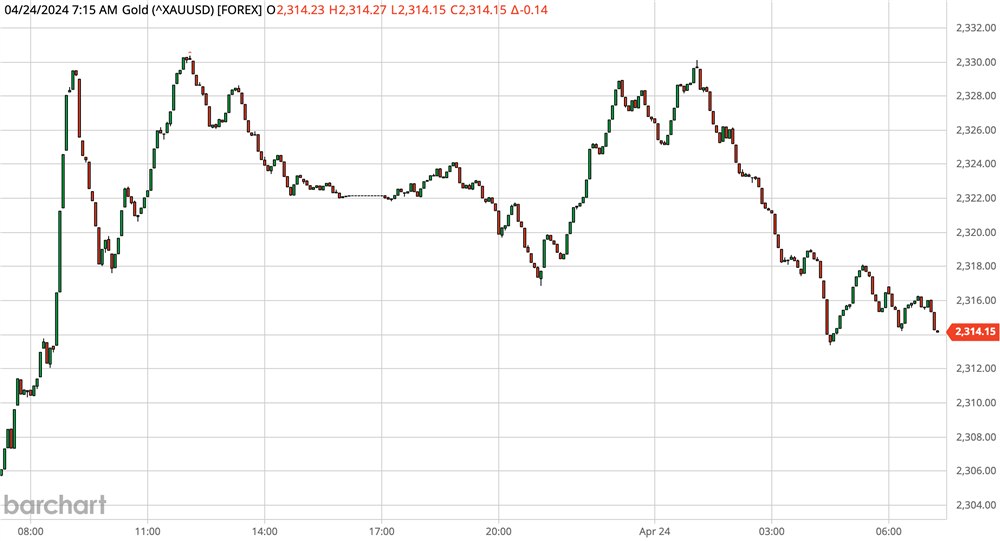

The capitulation in gold and silver extended overnight with what we think is mostly stop-loss selling from the massive net long built up from the $425 gold rally off the February low and the $7.50 rally in July silver.
However, ongoing liquidation of flight to quality longs from lower ME angst is certainly adding to the washout while typical outside market influences of the dollar and treasury yields have not been a noted influence and are unlikely to be a key impact today.
In retrospect, there was apparently more flight to quality longs in off the potential for a widespread Middle East war than expected and that should be remembered if conflict returns...[MORE]
Please subscribe to receive the full report via email by clicking here.
Good morning. The precious metals are lower in early U.S. trading.
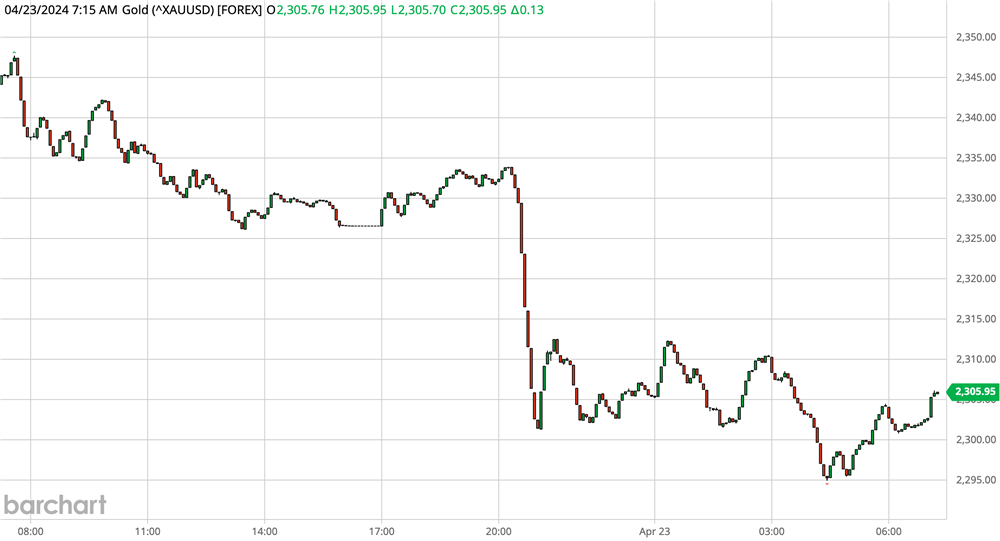
U.S. calendar features S&P Global PMI - Manufacturing/Services - Flash, New Home Sales, Richmond Fed Index, M2.
The vibe in the Middle East seems to suggest that the "tit-for-tat" fighting between Israel and Iran will pause has obviously punctured bullish sentiment in gold and silver. Therefore, the focus of gold and silver is likely to shift back to action in the dollar and US treasury yields.
While silver ETF holdings continue to decline very rapidly, gold ETF holdings declines are less significant. Last week gold ETF holdings declined by 478,713 ounces, while silver ETF holdings declined by 22.8 million!
Even though we suspect the Chinese central bank will continue to add to reserves (following 17 straight months of purchases) we suspect lower prices will have only a marginal impact on the size of Chinese Central Bank purchases...[MORE]
Please subscribe to receive the full report via email by clicking here.
Good morning. The precious metals are lower in early U.S. trading.
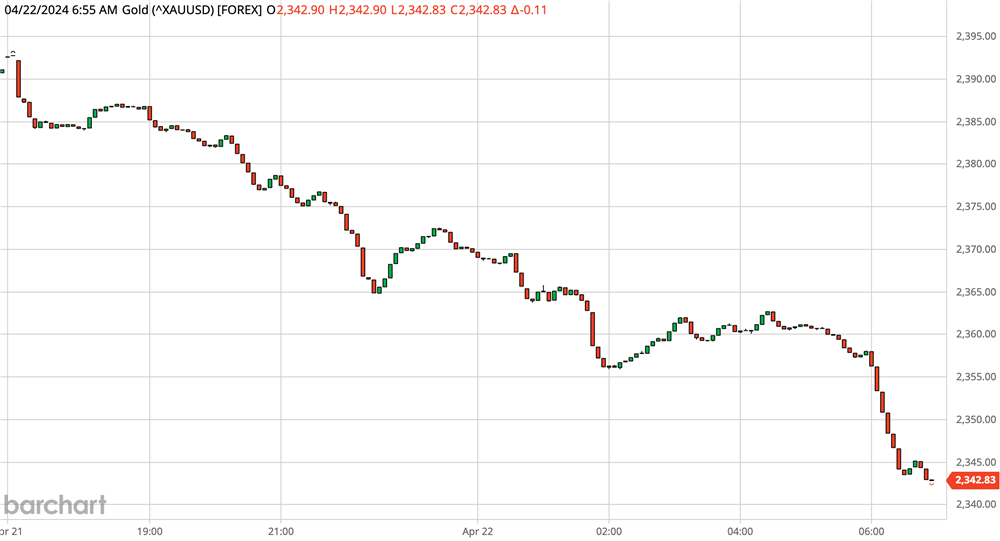
U.S. calendar features Chicago Fed National Activity Index.
The big question for the gold trade now is will the tensions between Israel and Iran cool and temporarily end the potential for sudden massive geopolitical-inspired flight to quality buying?
While not a major bearish development gold and silver ETF holdings continue to decline with the declines in gold and silver ETF holdings very significant yesterday (Gold -218,995 ounces & Silver -6.3 ml ounces).
Even the technical picture has shifted in favor of the bear camp with the overnight spike-up move squarely rejected...[MORE]
Please subscribe to receive the full report via email by clicking here.
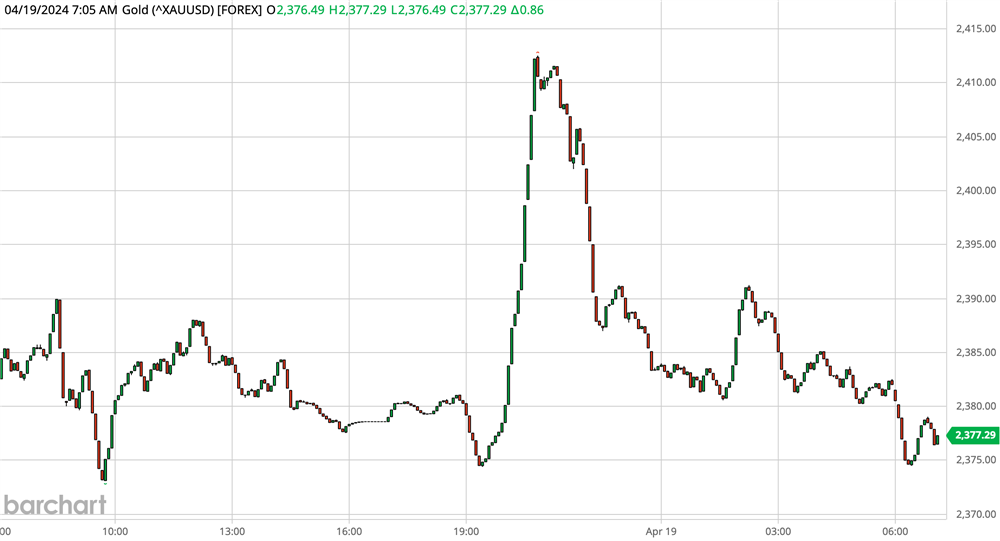
Despite a chorus of hawkish (less dovish) global central bank dialogue flowing from the IMF meeting, gold and silver prices are tracking higher perhaps because of slightly supportive outside market action in US treasuries and the dollar.
However, a new concern may be rising in the marketplace as significant declines in Japanese and South Korean currencies were acknowledged by the US Treasury Secretary at the IMF meeting with the US, Japan, and South Korean officials agreeing on the need to monitor and consult with other central banks on the situation.
Not surprisingly, the IMF dialogue has resulted in a downside extension in the US dollar this morning which could be the primary source of the gold and silver rebounds.
Please subscribe to receive the full report via email by clicking here.
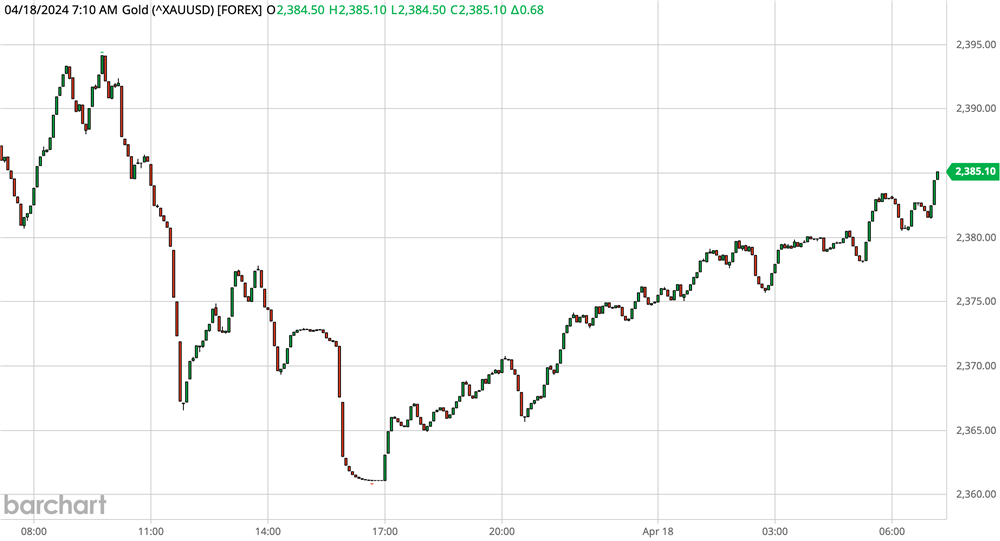
(New York City – April 17, 2024) On the heels of 2022’s record use of silver in industrial applications, a new record high was set in 2023 at 654.4 million ounces (Moz). Ongoing structural gains from green economy applications underpinned these advances as they did in 2022. Higher than expected photovoltaic (PV) capacity additions and faster adoption of new-generation solar cells raised global electrical & electronics demand by a substantial 20 percent. At the same time, other green-related applications, including power grid construction and automotive electrification, also contributed to the gains.
Overall, silver demand exceeded silver supply in 2023 for the third consecutive year, resulting in a structural market deficit of 184.3 Moz...[LINK]
PG Comment: Strong industrial demand and a fourth consecutive supply deficit should continue to underpin the price. Gains above the 2021 high of $30.14 would suggest potential to $35.35 based on a Fibonacci projection.